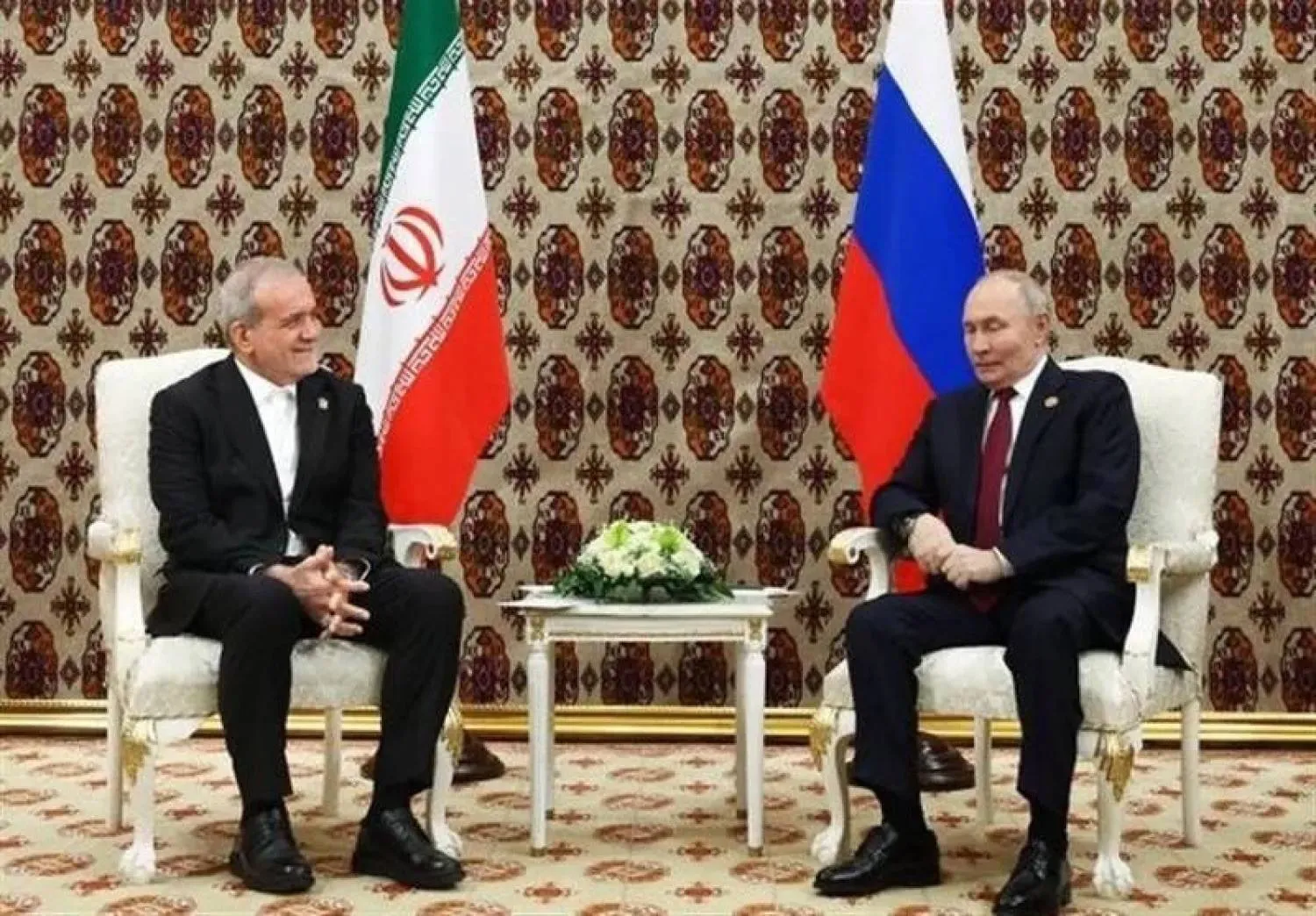Iran's Supreme Leader Ali Khamenei made a public appearance after over a week of absence and participated in a religious ceremony with university students on Saturday.
Khamenei's official website published his pictures during the ceremony, and state television showed him standing, addressing the attendees in a steady voice about the significance of the Arbaeen anniversary.
The New York Times said Friday, quoting four people familiar with Khamenei's health, that the Supreme Leader canceled all meetings and public appearances last week after falling gravely ill and is currently on bed rest under observation by a team of doctors.
The adviser to Iran's negotiating team in the nuclear talks, Mohammad Marandi, condemned the newspaper's report, saying it is biased. Marandi's father heads Khamenei's medical team.
Meanwhile, two sources close to Khamenei denied to Reuters on Friday that his health had deteriorated, responding to questions about his health.
Khamenei had not appeared in public since he met followers in Tehran on Sept. 3, sparking rumors on social media that he was ill.
Last week, official Iranian agencies circulated reports of his meeting with a crowd of athletes, but his official website did not publish any picture or news of the meeting.
He also did not meet with members of the Assembly of Experts, a meeting that takes place every six months after 48-hour sessions between influential clerics.
The 88-member council is involved in political and religious activities and selects a successor to the Supreme Leader in the event of his death or failure to perform his duties.
A former president of Iran and protégé of Supreme Leader Khomeini, Khamenei assumed the position of the country's top religious, political, and military authority in 1989.
- Khamenei's succession
The absence of a meeting between the Supreme Leader and the Assembly of Experts sparked a debate about Khamenei's son, Mojtaba, being groomed to be the next leader.
On Aug. 8, the Iranian reformist leader, Mir-Hossein Mousavi, warned of a plan for "hereditary leadership."
Mousavi, who has been under house arrest since February 2011, referred to the possibility of Khamenei's son succeeding him.
Khamenei's office did not comment on Mousavi's warning, but the Revolutionary Guards' media vigorously attacked him because of his criticism of the Religious Leader's interference in the Syrian war without addressing the issue of succession.
Later, Mousavi's warning was taken seriously after the Qom Seminary website referred to him for the first time as Ayatollah Mojtaba Khamenei.
"Ayatollah" is a religious title given to the clerics of the first rank according to Iran's Constitution, which was considered an indication that Mojtaba might inherit the position.
- Obstruction of Religious References
Following the cancellation of the Khamenei meeting with the Assembly of Experts, reports claimed an "incomplete quorum" after 30 members did not attend the conference.
A report claimed Khamenei's son met with several high-ranking authorities in the Qom Seminary, including Makarem Shirazi.
According to the sources, the religious references stressed the necessity of transforming Wilayat al-Faqih into a leadership shura, not led by one individual, which created a shock.
They noted that consultations among some members of the Assembly led to boycotting the meeting, which is held every six months.
- Shadow Person
Mojtaba's role in his father's office during the 2005 presidential elections was highlighted when reformist leader Mehdi Karroubi warned against his interference in the elections in favor of one of the candidates, in reference to Mahmoud Ahmadinejad.
In the 2009 elections, Mojtaba faced accusations of suppressing protesters and interfering in the polls.
In December 2018, Karroubi sent a strong message to Khamenei, asking him to take responsibility for his actions over 30 years, saying he did not prevent Mojtaba's interference in elections.
- Similarities
The idea of succession gained traction after increased chances of President Ebrahim Raisi assuming the position of the third leader.
Raisi won the presidential elections last year without being contested by a real competitor. The presidency was his second prominent position after Khamenei issued a decree naming him the head of the judiciary.
The Revolutionary Guards media began using the title "Ayatollah" for Raisi, and in April 2016, commanders of the Revolutionary Guards submitted a report about the internal and regional activities of the Guards to Raisi.
The move was interpreted as "a pledge of allegiance from the IRGC commanders to a rising candidate who is a Supreme Leader in training."
Last August, Khamenei vigorously defended the government's performance against criticism of worsening the economic conditions and prolonging talks to restore the nuclear deal.
Despite the similarities between Raisi and Khamenei before he took office, some analysts believe that Raisi's current performance could lead to a decline in his chances of reaching the highest position in the country.
- The Reformist
The grandson of the first Supreme Leader, Hassan Khomeini, who has close ties to the reformist camp, is a third candidate for the position.
Khomeini enjoys the support of religious circles close to his grandfather's establishment, especially those concerned about Khamenei's rule style.
He tried to boost his role in religious circles by running for the Assembly of Experts elections in February 2016, but he was excluded for an incomplete file.
Khomeini again sought a political position during the 2021 presidential elections, but Khamenei said his candidacy would not be in the regime's interests.
Supporters of Khomeini's approach, including supporters of a "leadership shura," are relying on Hassan's candidacy.
Former President Mohammad Khatami, former President Hassan Rouhani, and Vice President Eshaq Jahangiri are the most prominent supporters of this movement.









